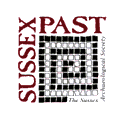Sussex Archaeological Collections: Relating to the history and antiquities of the counties of East and West Sussex
Sussex Archaeological Society, 2000. (updated 2022) https://doi.org/10.5284/1000334. How to cite using this DOI
Data copyright © Sussex Archaeological Society unless otherwise stated
This work is licensed under the ADS Terms of Use and Access.
Primary contact
Jaime
Kaminski
Sussex Archaeological Society
Barbican House
169 High Street
Lewes
BN8 1YE
Resource identifiers
- ADS Collection: 285
- DOI:https://doi.org/10.5284/1000334
- How to cite using this DOI
Uppark revealed: A reinterpretation of the history of the house and gardens in the light of evidence revealed during restoration in 1989â94 following damage by fire
By FRED ALDSWORTH
The fire which swept through Uppark in Harting, West Sussex, in August 1989 and the subsequent five-year restoration exposed much of the fabric of the house previously hidden by decorative plasterwork, panelling, and floor and wall coverings. The fabric and the debris provided much new evidence for the houseâs original form and decoration, and for changes made to it during its life. Minor ground disturbances around the house, for example for temporary buildings and services, led to the discovery of evidence for the development of the gardens.
This new archaeological evidence is presented here along with recently identified documentary evidence. Together they offer a revised and more detailed account of the history of the house and its gardens than has previously been available.
Although the house and gardens were first built in c. 1690 (Period 1), the precise dates for their construction and the name of the architect responsible are not known. The property was described as ânew builtâ by Celia Fiennes visiting in the second half of 1695, but dates as early as 1685 have been suggested for its construction for Ford Grey, Baron Grey of Warke, created Earl of Tankerville in June 1695. Although the house is often attributed to William Talman (1650â1720), with George London (c. 1640â1714) perhaps employed to design the gardens, the distinguished architect Hugh May (1621â84), who lived locally at Lavant, may have had a hand in its design.
The house was refurbished and the gardens were redesigned just a few years later, c. 1700â30 (Period 1a), with new outbuildings by the London builder John Jenner in 1723â5. They were extended and altered again on two further occasions, after purchase by Sir Matthew Fetherstonhaugh, between 1747 and 1774 probably to designs by Daniel Garrett (d. 1753) and Henry Keene (1726â76) (Period 2), and then by Sir Harry Fetherstonhaugh in 1811â17, to designs by Humphry Repton (1752â1818) (Period 3).
The picture that emerges is one of continuing change to meet the aspirations of successive owners or to accommodate visits by fashionable visitors, not least George, Prince of Wales between 1784 and 1804.





